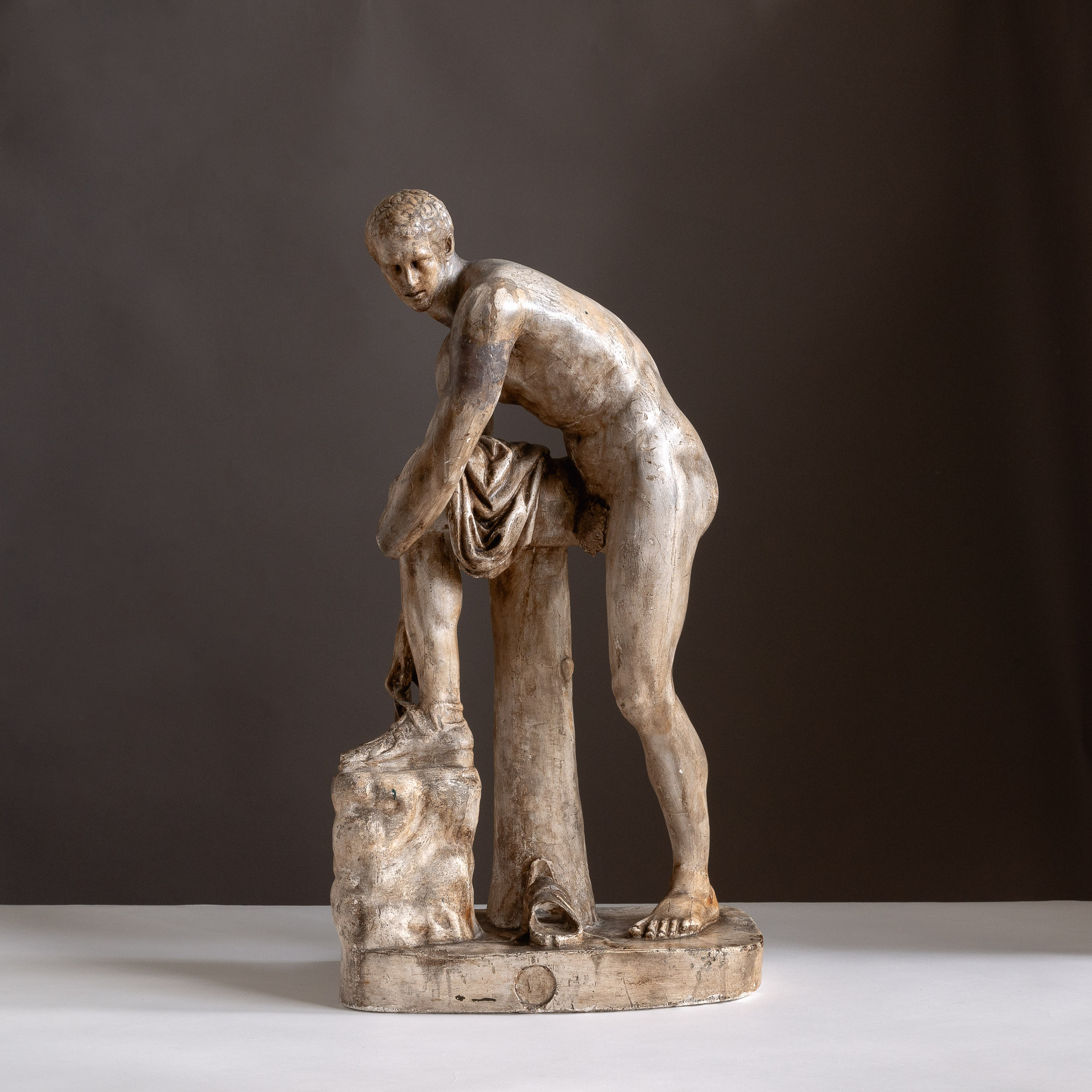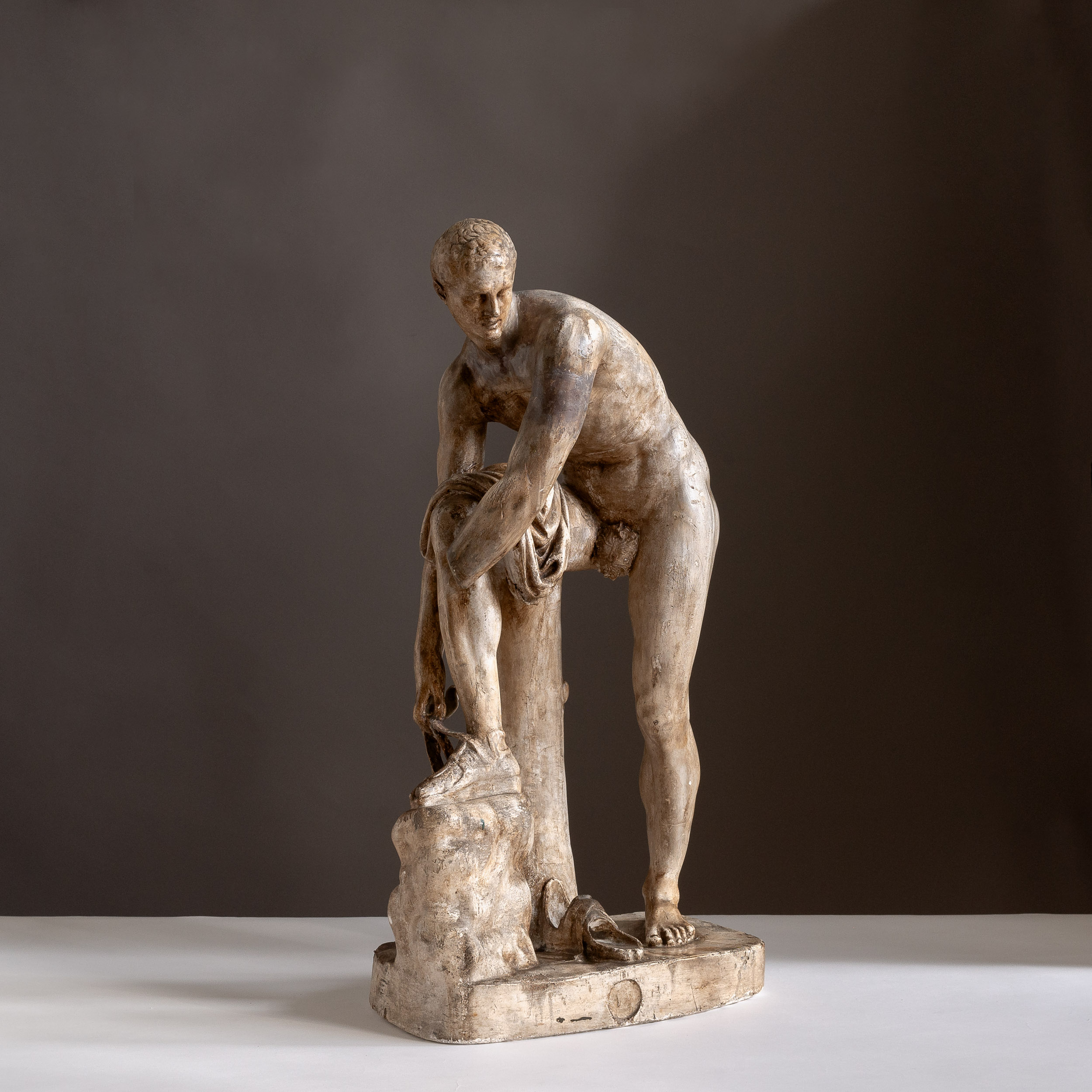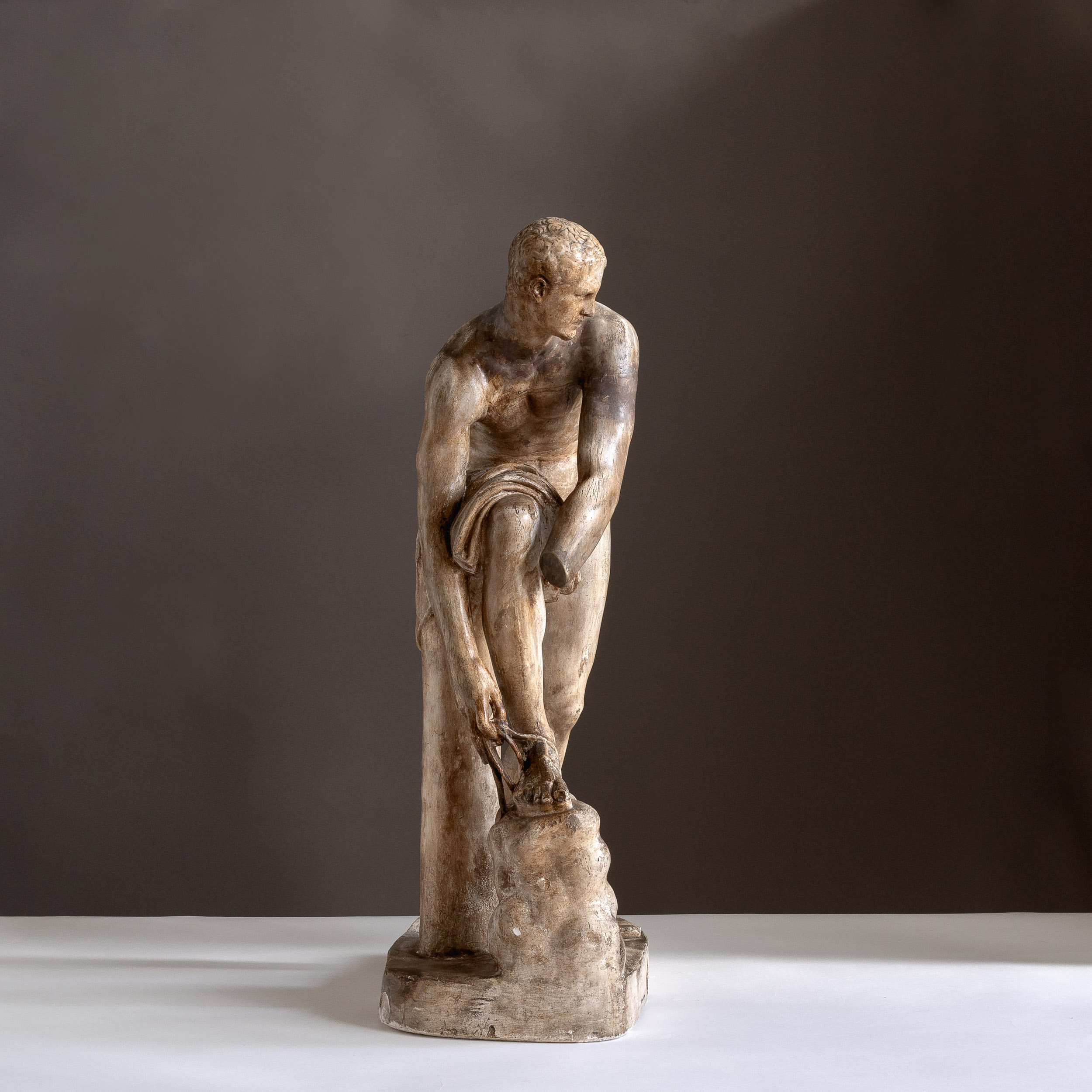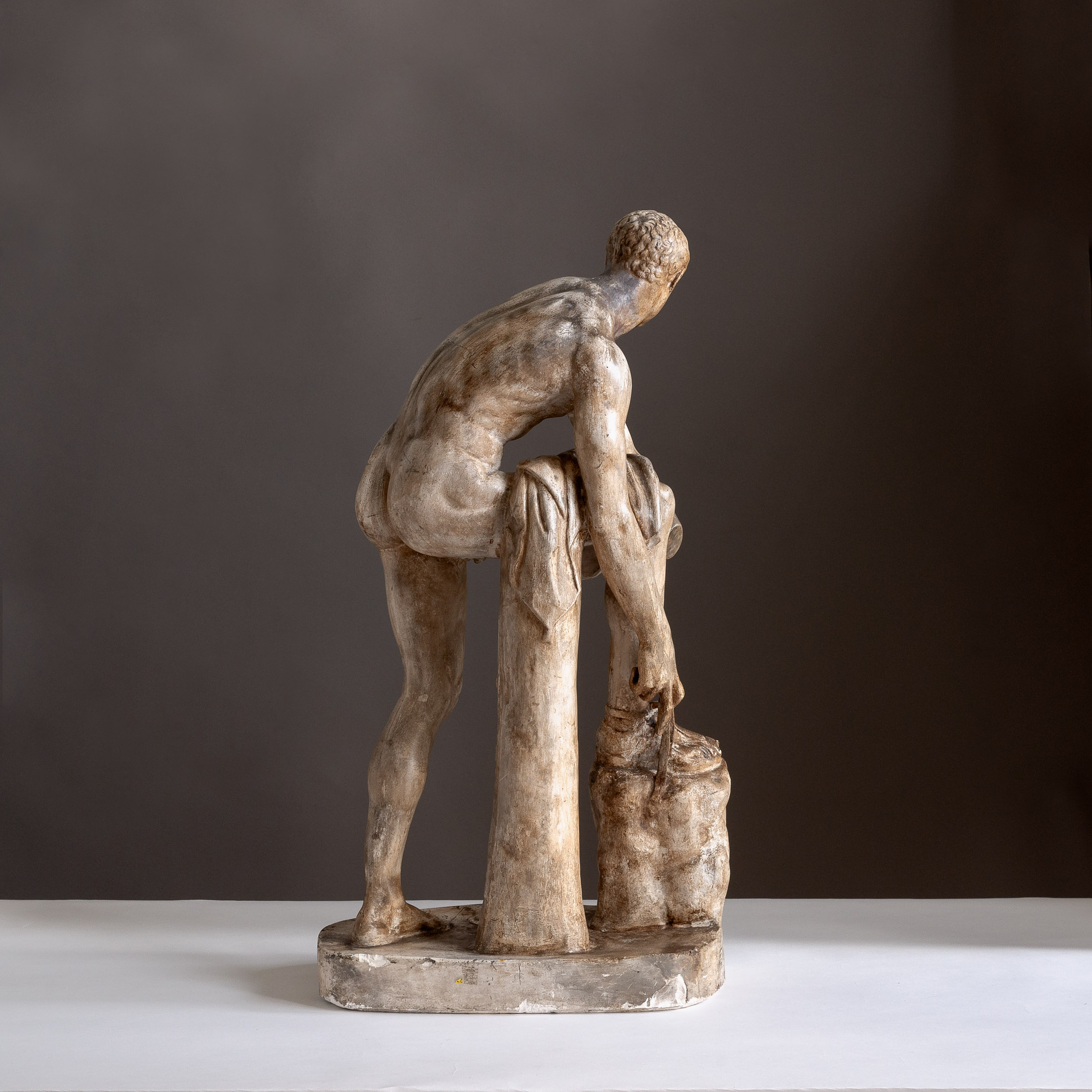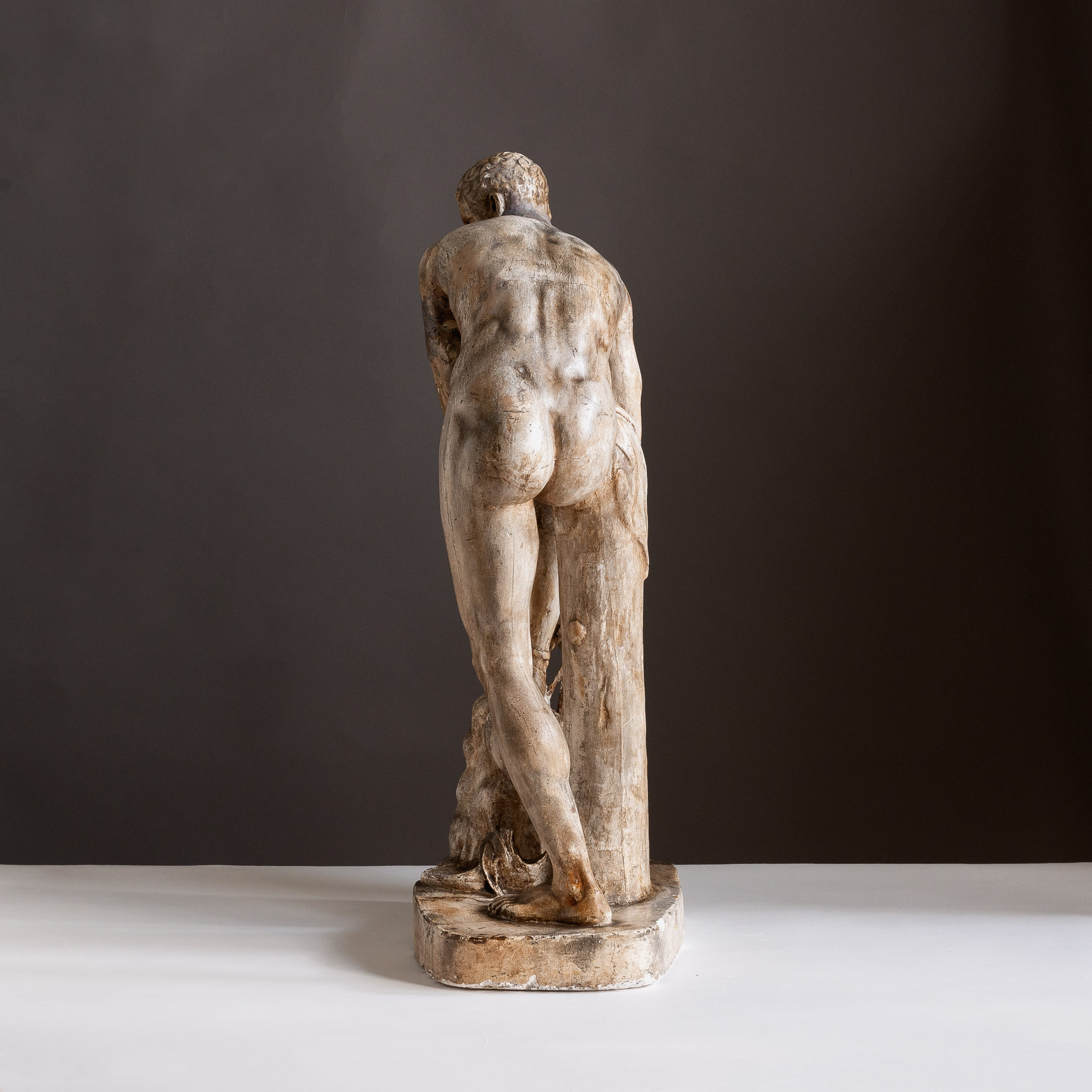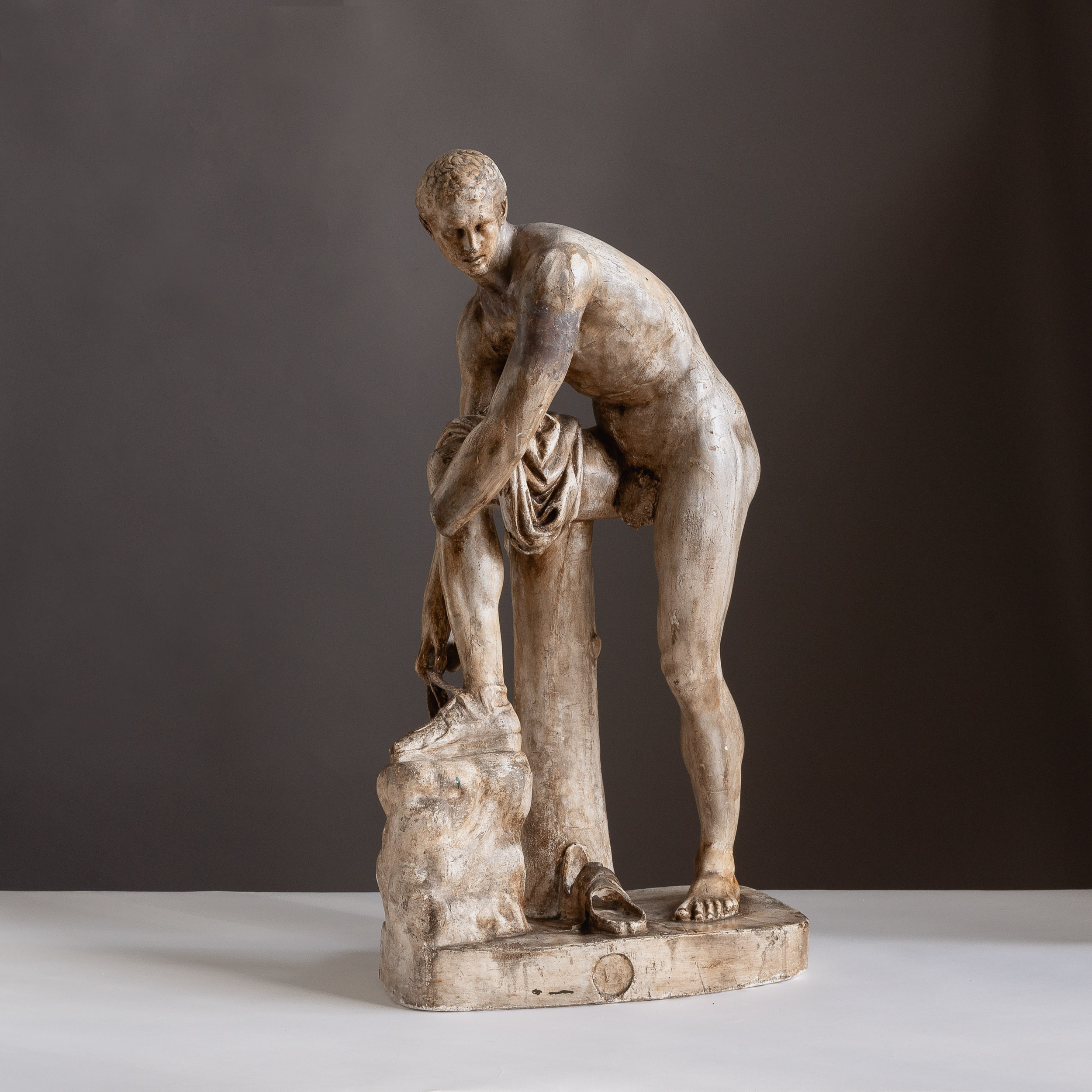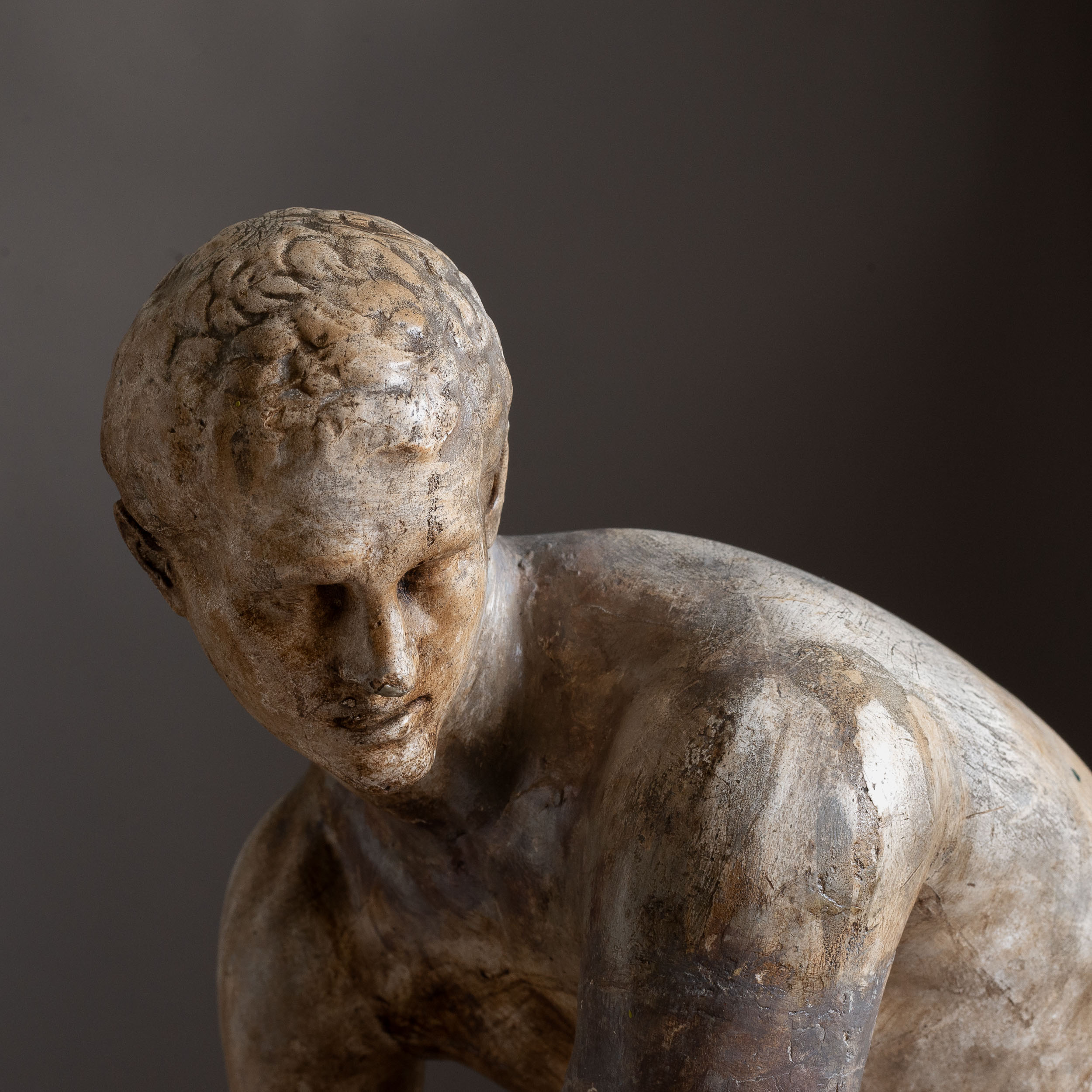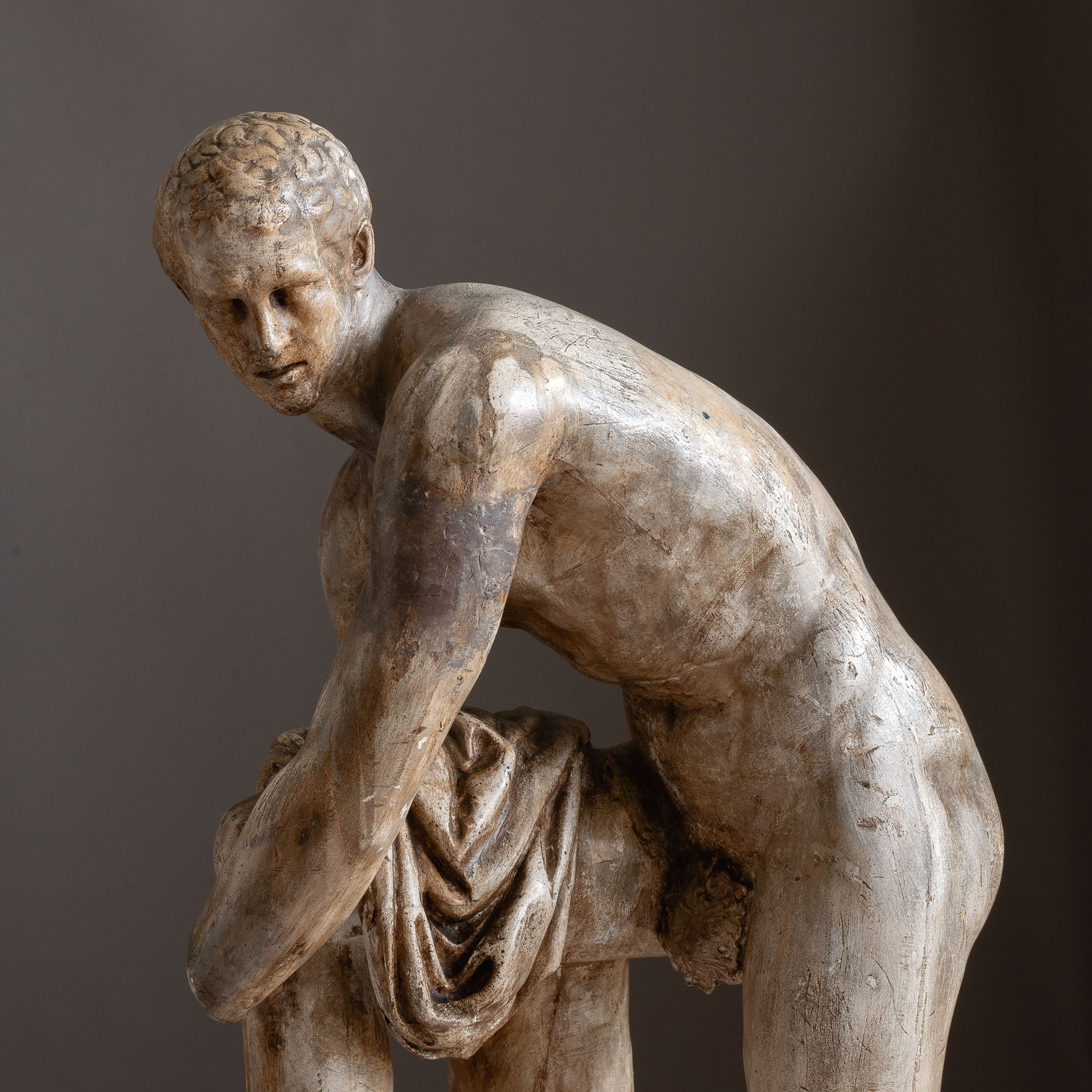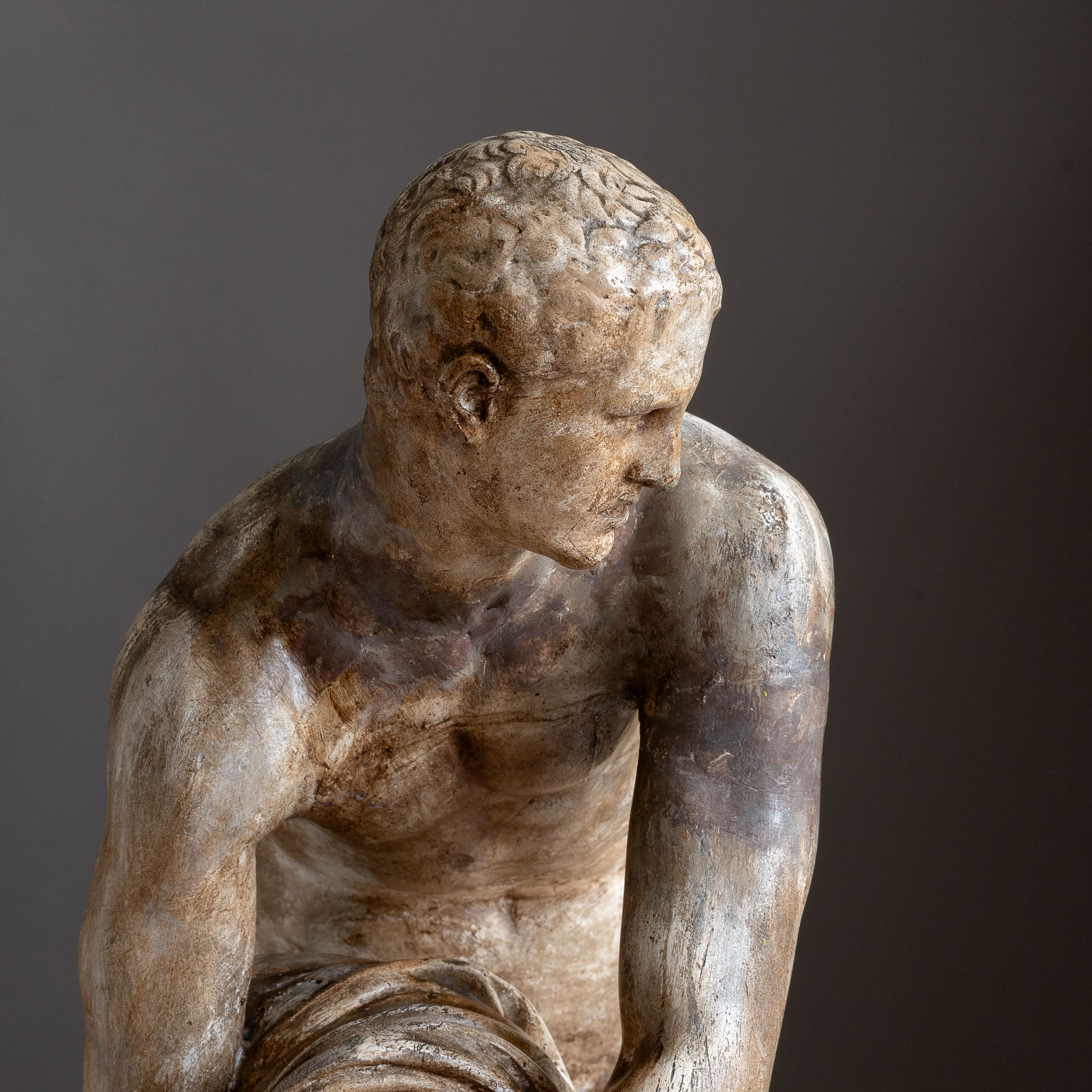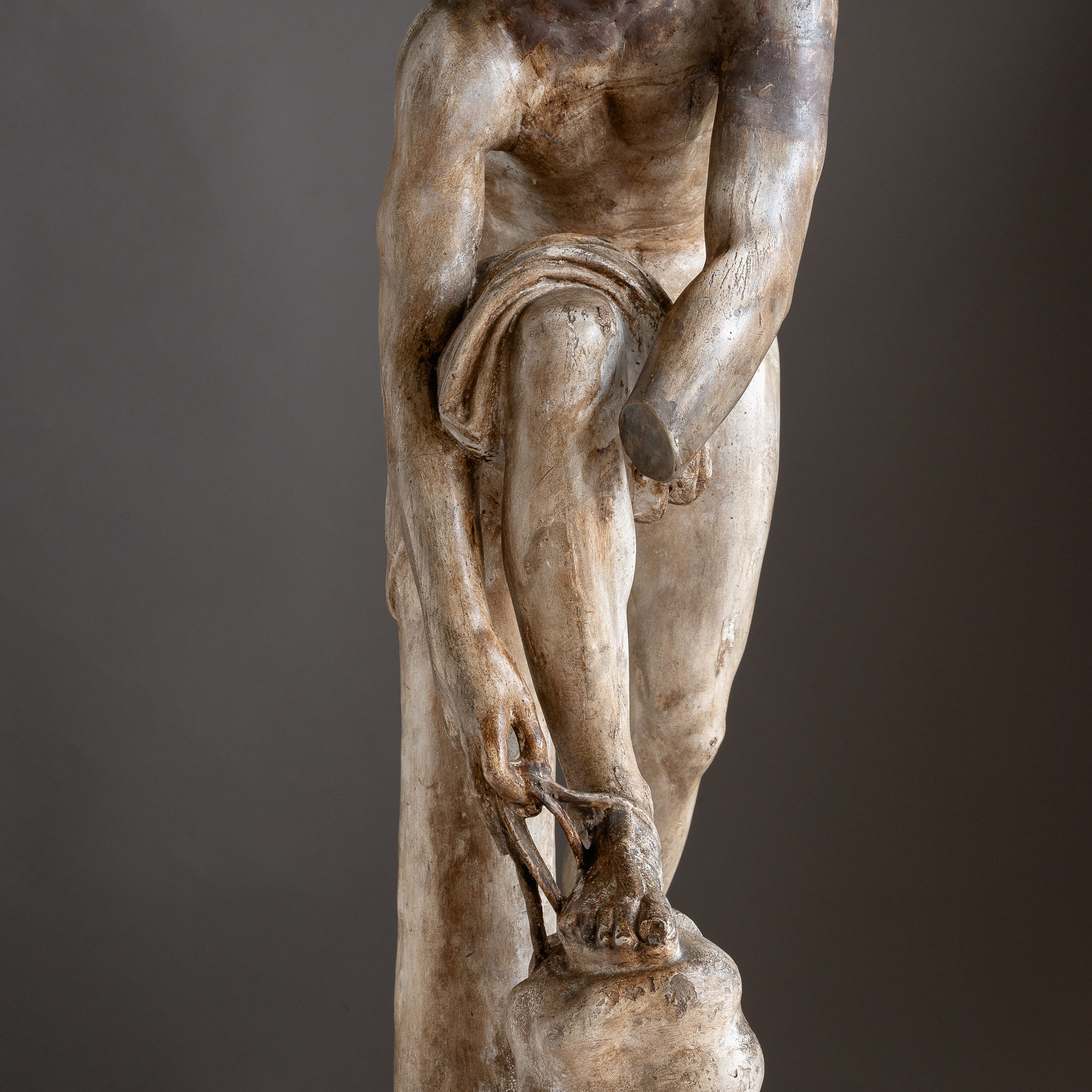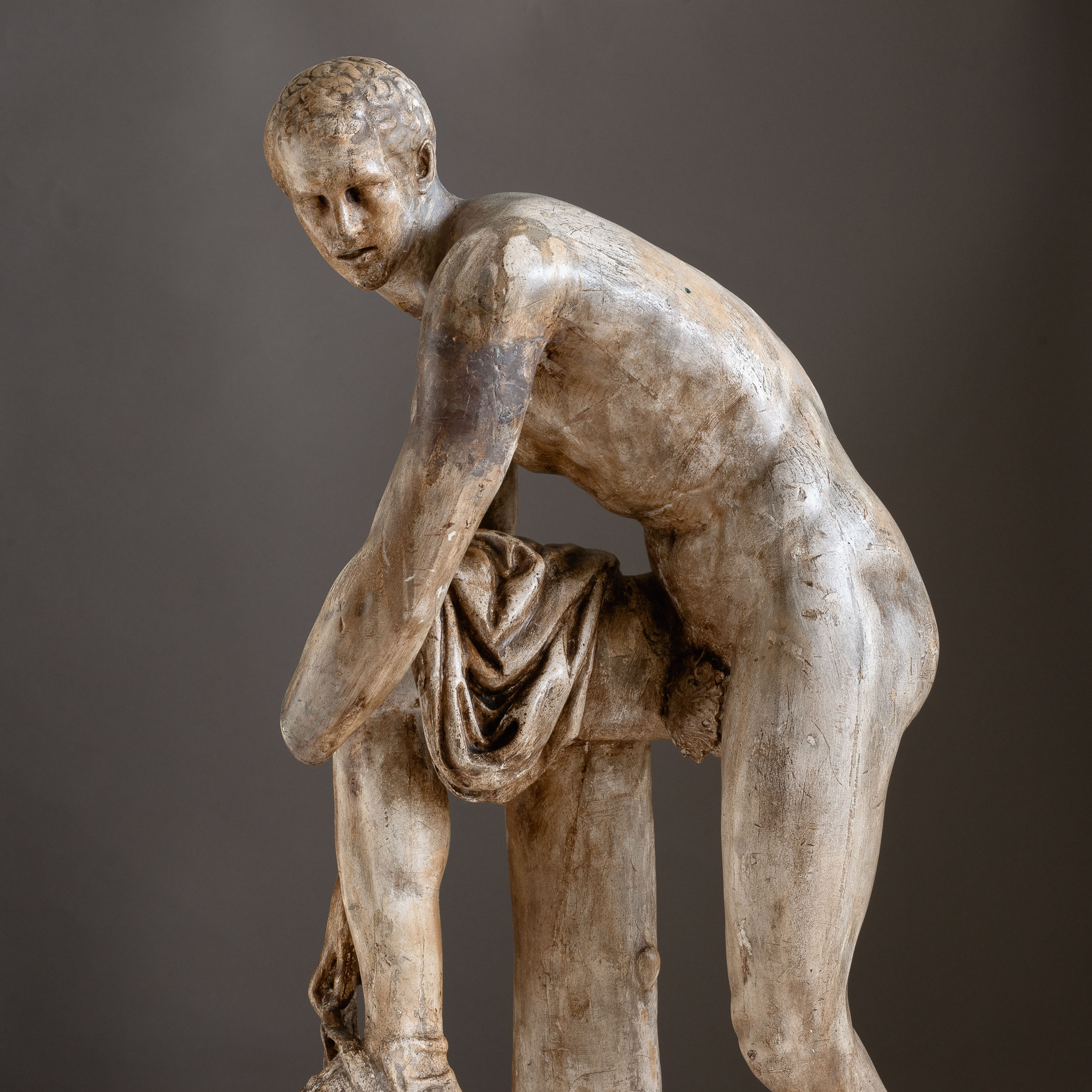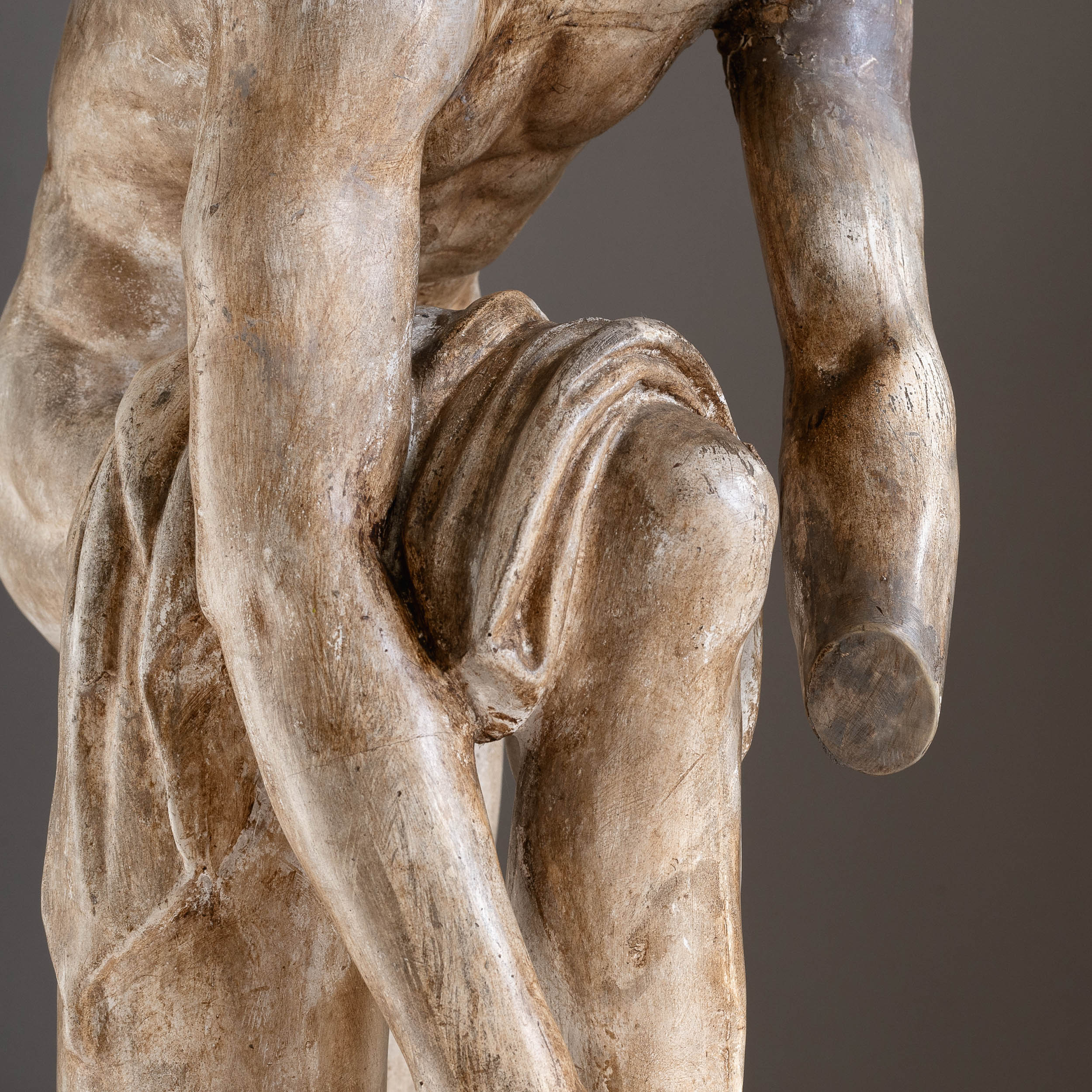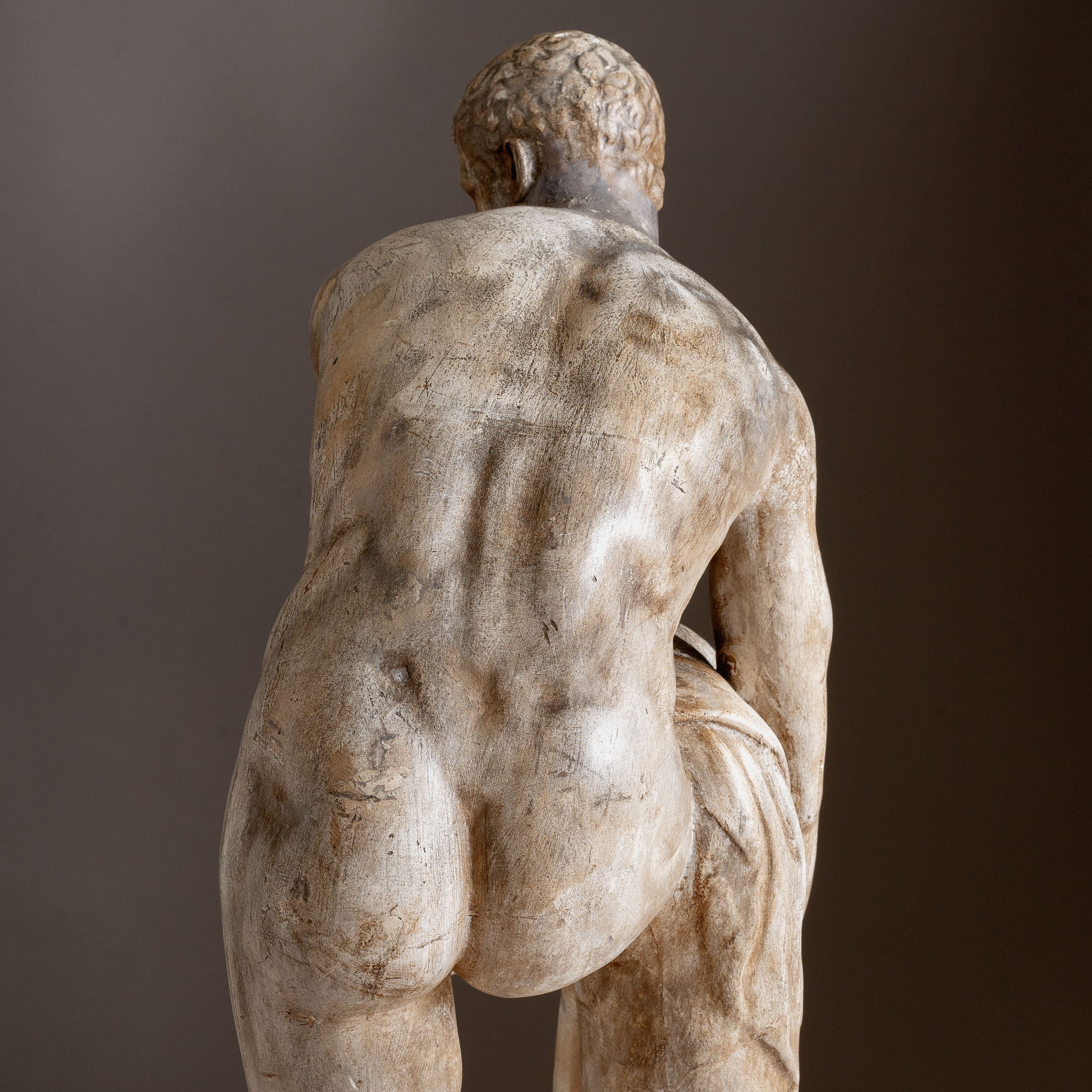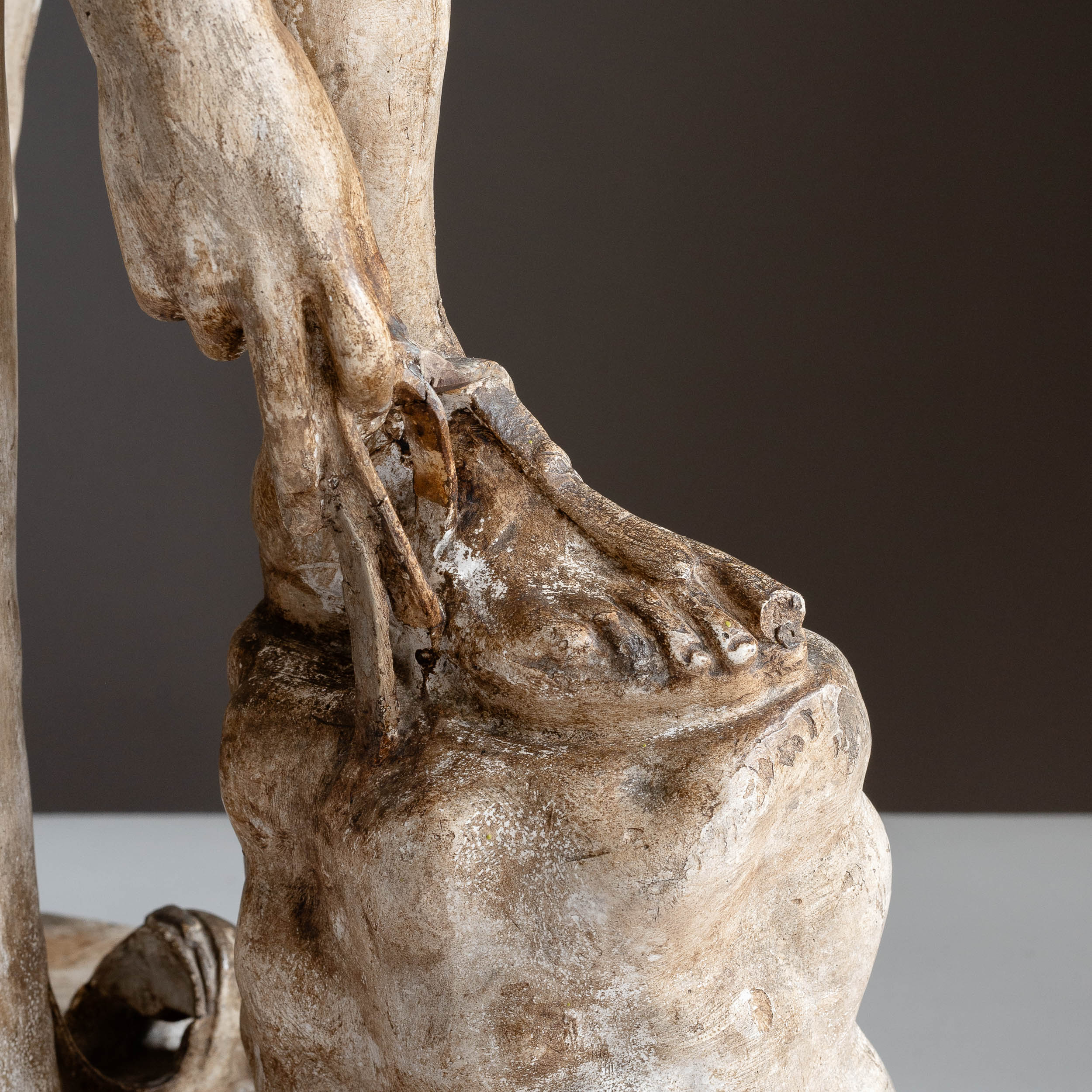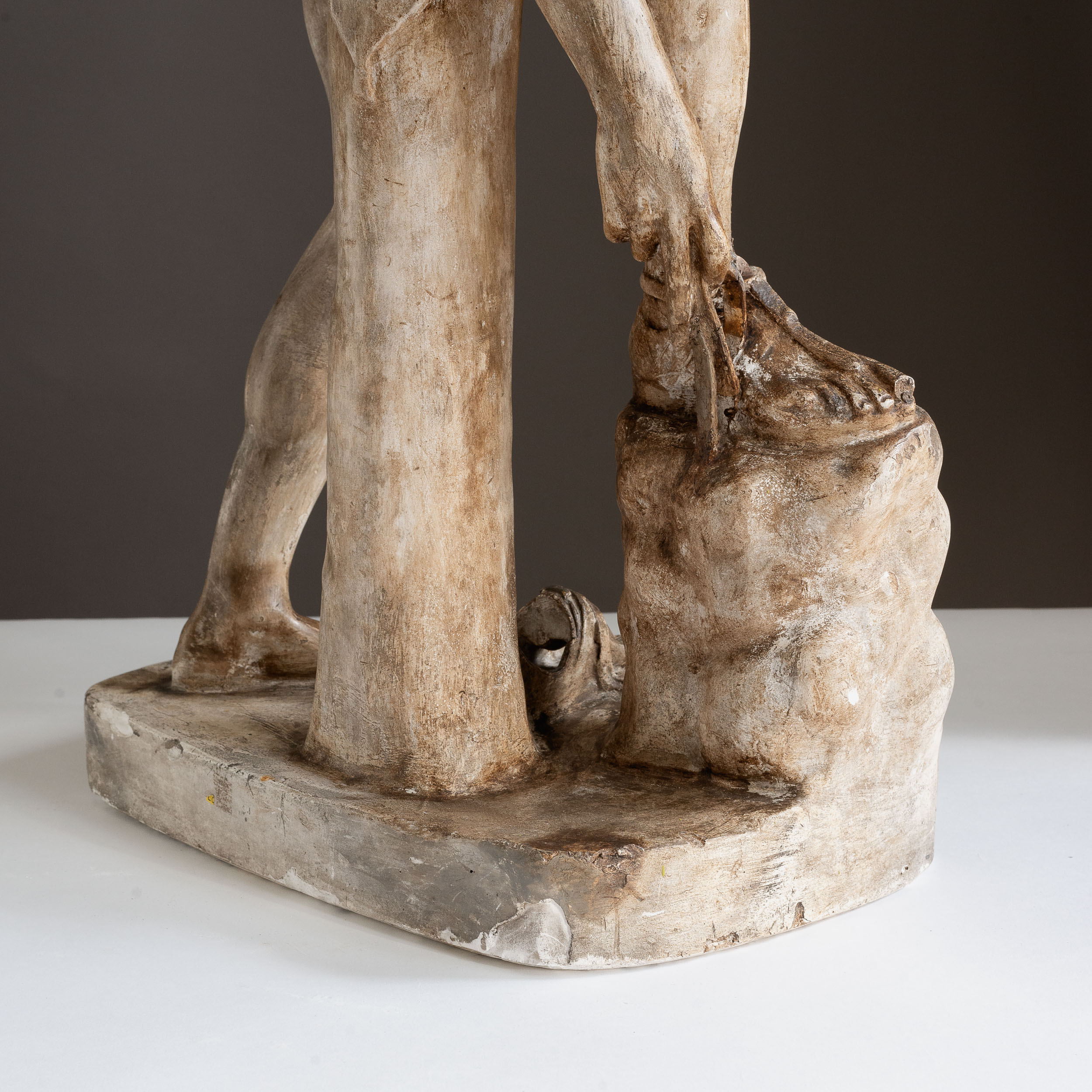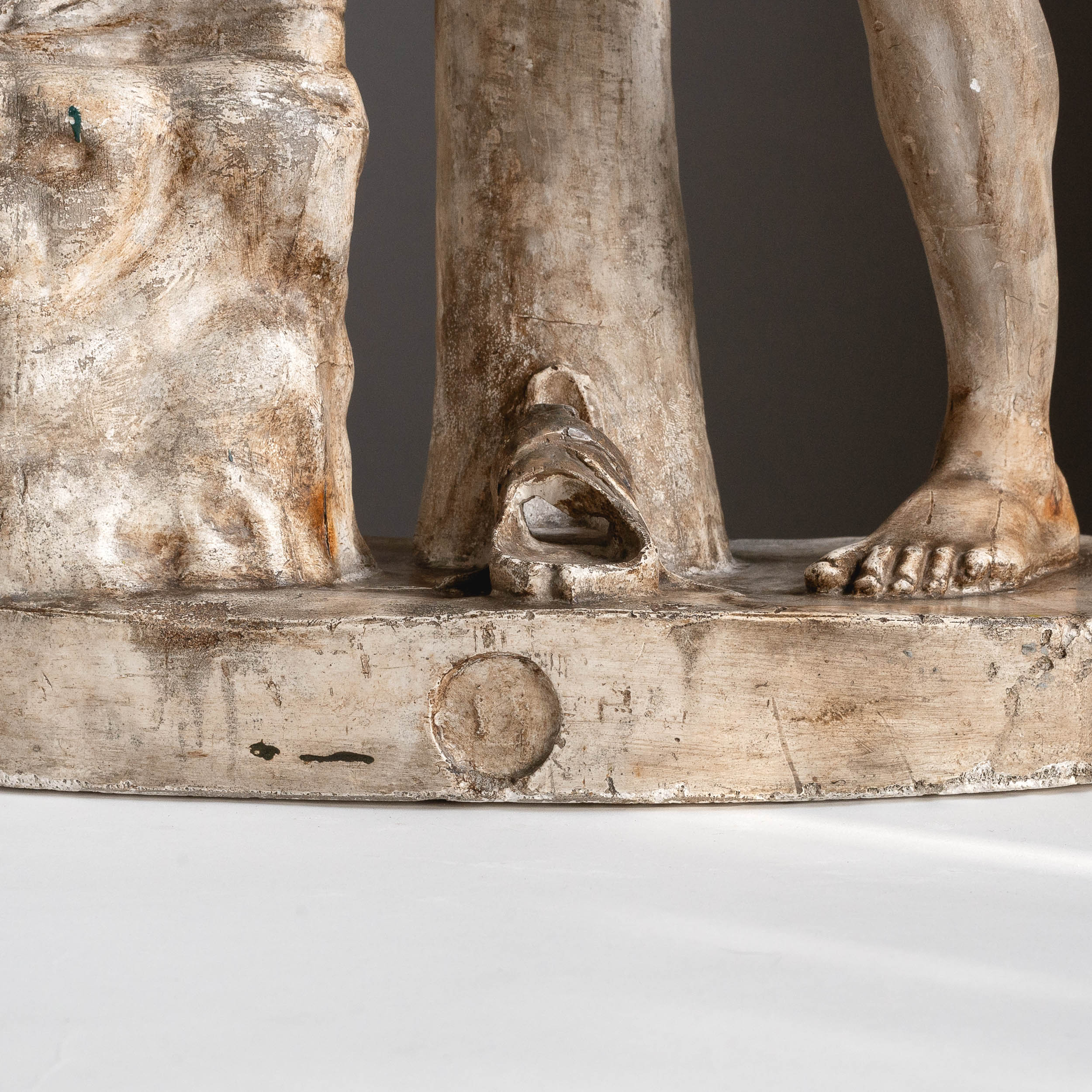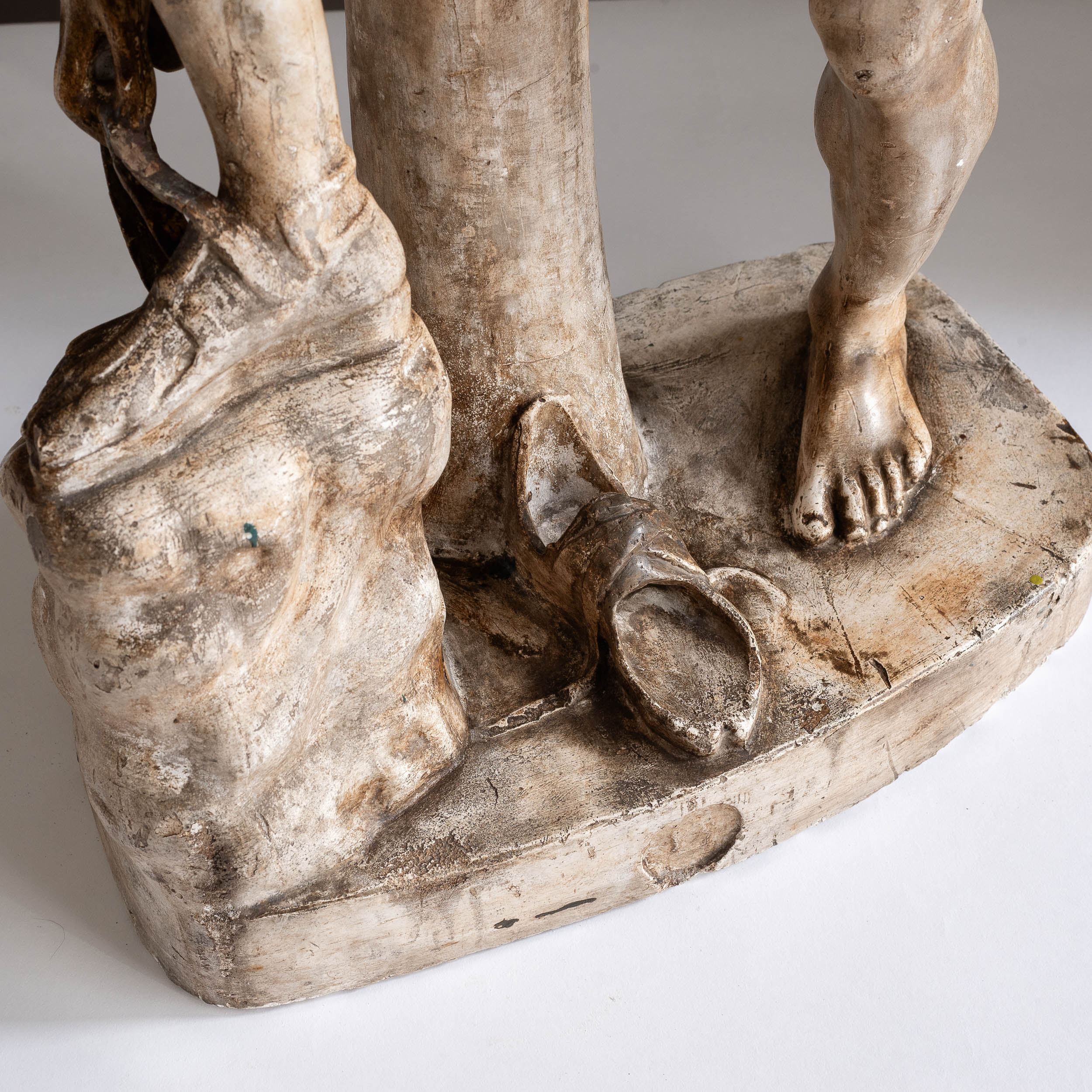No products in the basket.
Click and Collect – Please contact us to arrange collection or delivery of this item
Plaster statue of Hermes fastening his sandle,
A French Mid-Nineteenth Century copy of the so called Sandal-binder Hermes. The Roman figure is held in the Musée du Louvre in Paris. The statue in the Louvre is a Roman marble copy of an original Greek Bronze by Lysippus.
The appearance of the original, which stood in the Thermae of Zeuxippos in Constantinople, was described in detail by Christodoros of Koptos (491-518) : "There was Hermes ... He stood and fastened up the thongs of his winged sandal with his right hand, yearning to rush forth upon his course. His swift right leg was bent at the knee, and on it he rested his left hand, and meanwhile he was turning his face up to heaven, as if he were hearing the commands of his king and father"
Three other complete copies of the Sandal-binder Hermes have been discovered or unearthed since Gavin Hamilton recovered the first complete antique figure from the swamp of the Pantello in 1749, thereby establishing it's identity firmly as Hermes and acknowledging it's status as one of the received masterpieces in the canon of antiquity.
It appears to have been placed ornamentally in baths and gymnasia.
£1,850
In stock
This mid 19th Century statuette recreates the Roman copy of the Greek original, cast in bronze work by Lysippus.
Lysippus was an acknowldeged genius of Classical Greek sculpture. His work during the 4th Century BC first provided the means of representing bodies in motion due to his employment of slender proportions and precise muscular forms. His were, perhaps, the first representations of the human figure intended to be viewed ‘in the round’.
Pliny describes an anecdote of Lysippus in which he is recorded as saying that ‘whereas his predecessors had made men as they really were, he made them as they appeared to be.’. A close inspection of the form of the Hermes will show that his body is actually eight times larger than his head, an unnatural relation. Lysippus was well known for this technique which is said to create the illusion of height, strength, grace and firmness. All this was achieved, however, without in any way detracting from the symmetry of the form or the beauty of the figure. This served Lysippus’s purpose of deliberately disproportioning the human figure to give it a super-human beauty of form.
The purpose of Lysippus method of sculpture was to bring the Gods closer to Man and Man closer to the Gods. Thus the divine Hermes is shown as a Man pursuing the most mundane of tasks, doing up the latchet of his shoe. And yet he is a Man with the beauty of the Immortal Gods.

